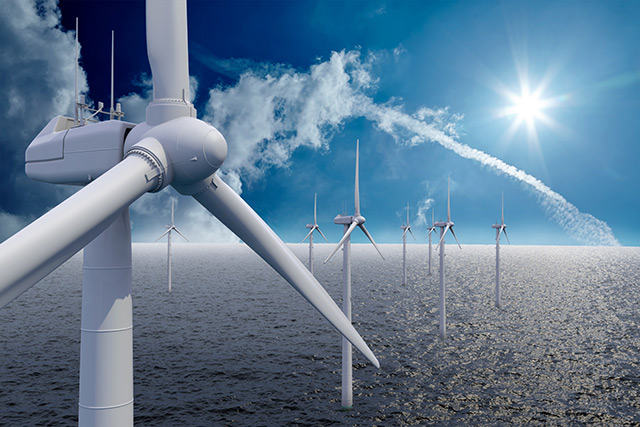
The rapacious demand for green energy has led to a corresponding increase in the number of wind farms, both onshore and offshore. Europe has more than 900 offshore wind farms in various states of construction.
Researchers from Aarhus University (Aarhus) picked the North Sea population of harbor porpoises (Phocoena phocoena) as a case study for their new model. While porpoises are generally not a threatened species, they are still protected by European laws.
Wind power industry regulators therefore need a way to determine the negative effects of these facilities on protected animals like harbor porpoises. Too much noise made by construction and operation of wind farms at sea could drive the animals away from their feeding and breeding grounds. (Related: A sperm whale was found dead on a Spanish coast after consuming 29 kilos of plastic pollution.)
Predicting the effect of offshore wind farm construction on local marine wildlife
The researchers created the DEPONS computer model to help reduce the impact of the noise made by construction. They drew from existing data on animal energy, foraging, and movements that have been affected by similar disturbances.
DEPONS can be used to predict the behavior of a wide array of marine animal species. Its first test was to assess how the noise of wind farm construction in the North Sea affected the local population of harbor porpoises.
For their experiment, the Aarhus researchers studied the porpoise population near the Gemini offshore wind farm during its construction. Located in the waters north of the Netherlands, Gemini is the second biggest offshore wind facility in the world.
In addition to taking notes of the porpoise population, the researchers recorded the sounds that the animals made to find their way via echolocation.
Once they collected the necessary data, the researchers programmed a virtual replica of the Gemini wind farm. The wind turbines of the simulation were arranged in exactly the same way and made just as much noise as the real thing.
Constant construction noise will drive porpoises away for longer time periods
DEPONS used this virtual Gemini scenario to simulate the noise of construction at 65 different wind farms. While the noise from the piling did affect the local population, they recovered within a matter of hours. Further more, porpoise populations in the rest of the North Sea appeared to be unaffected by the noise in most models.
The only scenario where the construction noise of wind farms affected North Sea populations was the one where the simulated animals could hear sounds from as far as 12.7 to 31 miles (20-50 km). In addition, the distance at which an animal reacted to the noise exerted a bigger effect over the number of times a noise deterred an animal from approaching an area.
The construction schedules of wind farms and the duration of the intervals between pile diving influenced the effects of the noise. Exposing the North Sea's feeding grounds to a steady source of construction noise for several years made a bigger and longer-lasting effect on porpoise populations.
In much the same vein, consecutive pile driving during the construction of a wind farm was worse for local densities. The reverse is true, as spreading out the instances of construction gave the porpoises more time to recover.
You can read more articles about the effects of renewable energy on local wildlife at Ecology.news.
Sources include:
Please contact us for more information.






















